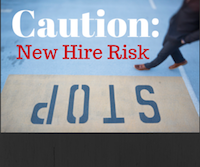Media rental service Netflix, toy manufacturer Lego, and photography giant Fujifilm. Vastly different industries but they have one thing in common. They used internal disruption to improve their business models and reinvent themselves to adapt to a changing world.
For Netflix, it was recognizing changing technologies and transforming from a DVD by-mail rental business to the king of streaming. Lego, for decades one of the most popular construction toys for children, turned its brand around by releasing The Lego Movie in 2014 and then scaling back its products to focus on those that delivered a great customer experience. Perhaps the greatest adaption came from Fujifilm which not only survived the move to digital photography but started successful pharmaceutical and cosmetic lines.
Knowing what disruption is and the value it can bring can be invaluable in helping:
- Companies improve their talent acquisition (TA) models; and
- RPO providers deliver more innovative services.
In the RPOA webinar, Talent Acquisition Continuity During COVID-19: Executing Amid Chaos, three leaders from Advanced RPO offer a glimpse into their RPO delivery model and share how they help their clients adapt to unexpected disruptive forces. We take a look at how they use techniques like resource allocation and consultation on processes and tools to help their clients stay agile and prepare for what lies ahead.
Using RPO to Respond to Market & Business Changes
COVID-19 has forced many industries and companies to rapidly change their approach to TA. RPO can be a powerful ally in helping businesses of all sizes navigate these changes.
Some companies have drastically reduced their workforce. Others are still hiring or even increasing the number of new employees. RPO allows them to structure or restructure their TA model by adapting day-to-day processes, reconfiguring client and candidate communications, and forming a “new normal” that works for all involved.
Resource Allocation
How are companies making the shift and how can RPO help them find solutions that keep their business—and employees—thriving?
Kevin Armstrong, Account Manager at Advanced RPO, says resource allocation is key. “Changes are now coming in faster than we normally see,” he says, but RPO is designed to embrace new developments and ease transitions. One of his clients has stopped hiring for now. One in the food delivery sector, though, has seen an increase in worker need. For Kevin, a big piece of the puzzle is making sure every open position is covered.
In practice, Kevin says, the current crisis has shown him how much more often he needs to review where and how things stand. Once-a-week assessments may have been sufficient in the past, but today it’s more likely every other day. This constant monitoring of resource allocations and prompt reaction to new developments ensures clients have the talent and coverage they need.
Process & Tools Consultation
Asked whether Advanced RPO takes it lead from what its clients are doing, or if it plays a more proactive role in technology and tools, Account Manager Paul Wolf says the firm does get involved in exposing clients to new approaches they may not be familiar with.
When it comes to consulting, he says, “We customize the solution per each client’s needs.” Those needs vary and often differ from what was previously in place. New needs often call for new solutions. His plan of attack? “We look at the technology they currently have and then we build on it.” Other times, Advanced is there to assist, bringing its experience to the table, but respecting a client’s wish to work within their existing program.
A Disruptive Approach to Talent Acquisition
In times of crisis, companies may find themselves needing to reimagine and redesign their TA processes. Panel moderator and Advanced RPO President, Pam Verhoff sees it as an interesting shift and one that can be beneficial.
Historically, she says, the hiring process was a structured, formalized endeavor where the i’s were dotted and the t’s crossed before launch. Today, many clients want to ramp up their process while immediately hiring new talent, an approach she believes “adds value to the client” and makes disruption a plus. How so?
When companies look at their TA process with a fresh pair of eyes it can help them innovate faster than their competitors.
- Like Netflix, they can use data and predictive analysis to stay ahead of the curve.
- Like Lego, they can better understand what their company stands for and use that to hire talent that helps them meet their goals.
- Like Fujifilm, they learn where their talent gaps currently are and what candidates expect from them.
A successful TA transformation is always a mix of insight and courage. RPO helps businesses use transformative times to achieve key talent goals, maintain continuity, and develop competitive solutions to keep their businesses thriving.
Listen to Pam Verhoff and Kevin Armstrong as they discuss this topic in more detail in this 30-minute informative webinar: Talent acquisition continuity: Executing Amid Chaos.
Recommended: Hiring agility: How RPO helps businesses adapt to hiring disruptions
















